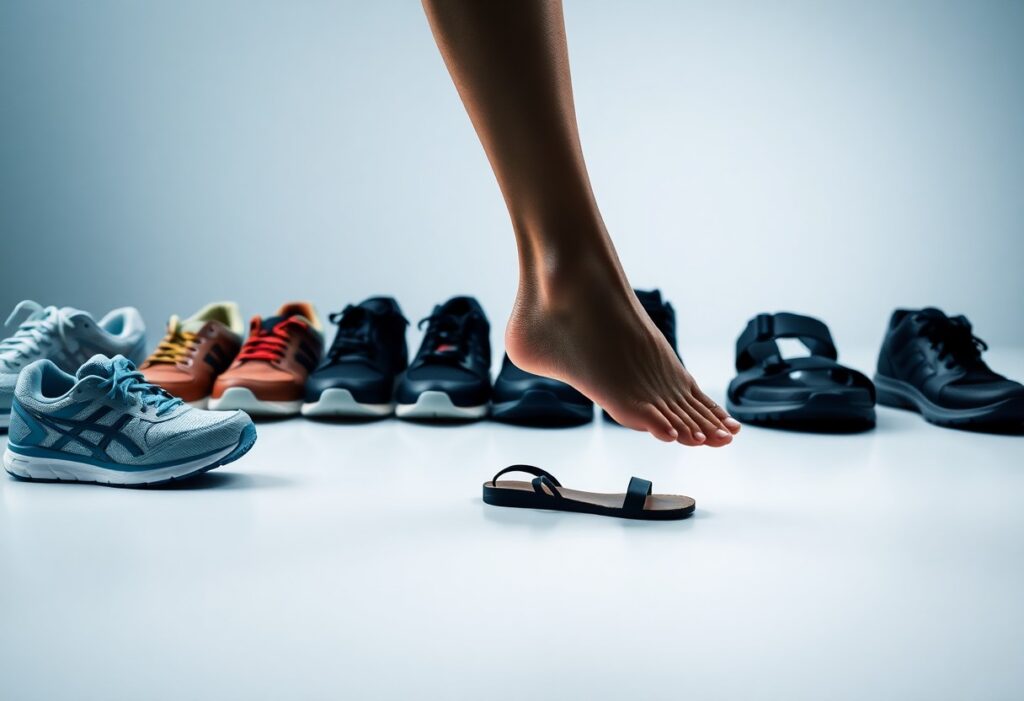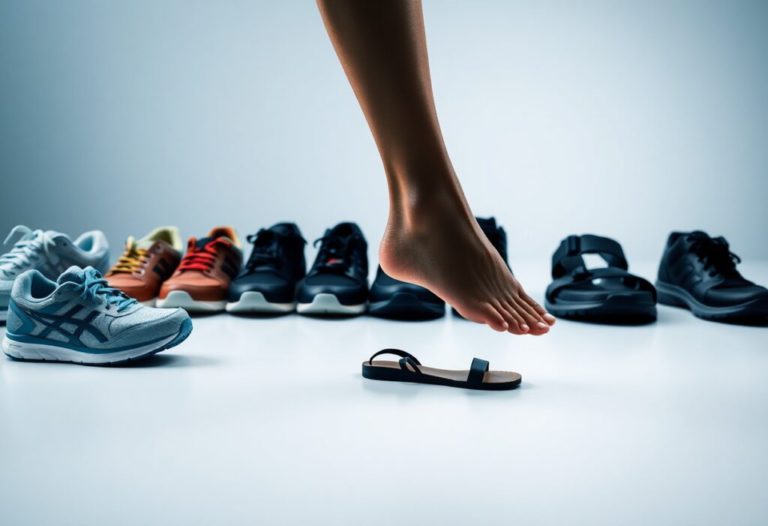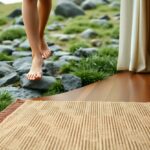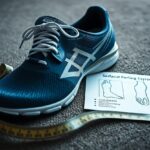
As you walk, the choice of footwear you make can greatly influence your foot health, either promoting well-being or causing discomfort and issues. Many people mistakenly think that shoes with enhanced cushioning and support are the best solution for foot pain. However, conventional shoes can often exacerbate problems rather than alleviate them. Dr. Alissa Kuizinas, a Massachusetts-based podiatrist, advocates for barefoot shoes or minimalistic footwear, asserting that they encourage stronger feet and improved health. By opting for shoes that allow your feet to function naturally, you can significantly reduce the risk of foot ailments and boost your overall foot wellness.
Uncovering the Hidden Dangers of Traditional Footwear
While traditional footwear may provide temporary relief from foot pain, they often worsen existing conditions and bring about new problems, as pointed out by Dr. Alissa Kuizinas. She highlights that the $133 billion shoe industry commonly prioritizes style and profitability over genuine foot health, leading to designs that can constrict and weaken your feet over time. This dependency on conventional shoes can create a cycle that ultimately jeopardizes your foot well-being.
Examining the Shoe Industry’s Missteps in Foot Health
The crux of the issue lies in the shoe industry’s flawed understanding of foot health, which often emphasizes excessive cushioning, support, and rigid design instead of addressing the root causes of discomfort. This approach cultivates a dependency on shoes that may actually harm your foot health in the long run, leading to complications that could have been prevented.
Highlighting the Inadequacies of Conventional Shoe Design
Many traditional shoe designs are characterized by narrow toe boxes, rigid soles, and excessive cushioning, which can impede natural foot movement, resulting in weak and dysfunctional feet. Dr. Kuizinas stresses that footwear should protect your feet from external factors while also allowing for natural movement. Ideally, a well-crafted shoe should emphasize natural foot function and incorporate minimalist features, such as wide toe boxes, flexible flat soles, and minimal cushioning to promote foot health.
By choosing barefoot shoes or minimalistic footwear, you actively contribute to strengthening your feet and enhancing your overall foot well-being. Dr. Kuizinas recommends adopting a philosophy of using as little shoe as possible, allowing your feet to function naturally and move freely, which is essential for maintaining healthy foot mechanics.
The Essential Importance of Natural Foot Movement
Footwear that limits your foot’s ability to move freely can result in a range of foot problems and discomfort. It’s crucial to assess how your footwear choices impact your overall foot health and comfort levels. Understanding this connection can lead to better decision-making when it comes to selecting shoes.
Evaluating How Footwear Affects Mobility
To fully understand the impact of your shoes on foot mobility, it’s imperative to analyze the specific design features of your footwear. Traditional shoes often incorporate cushioning and support elements that can inadvertently restrict your foot’s natural movement, leading to weak and dysfunctional feet over time. Such limitations can hinder your feet from developing the necessary strength and flexibility they need to thrive.
Recognizing the Benefits of Allowing Natural Foot Mobility
The advantages of permitting your feet to move naturally are vast, as strong feet are fundamental to overall foot health. By choosing minimalistic shoes or barefoot footwear, you empower your feet to function naturally, thereby promoting strength and resilience. Natural movement is vital for developing strong feet. When constrained by conventional footwear, you risk encountering various foot issues and discomfort. On the flip side, embracing minimalistic shoes or barefoot alternatives can significantly improve your foot health by allowing for natural movement and facilitating strength-building.
By carefully selecting the right footwear, you can effectively reduce your risk of developing foot problems and enhance your overall foot wellness.
Diving into the Concept of Functional Footwear
Gaining a comprehensive understanding of functional footwear is crucial since these shoes prioritize both foot health and natural movement. Functional footwear is specially designed to enable your feet to operate as intended, eliminating the need for excessive support or confinement that can hinder natural foot function.
Defining Functional Footwear and Its Key Features
Upon conducting thorough research and experimenting with various shoe styles, you’ll find that functional footwear possesses distinct characteristics such as a wide toe box, flat and flexible soles, and minimal cushioning. These design elements empower your feet to move freely and naturally, fostering stronger and more capable foot mechanics that are essential for optimal foot health.
How Functional Footwear Enhances Overall Foot Health
Wearing functional shoes yields numerous benefits, including improved foot strength, a reduced risk of injuries, and enhanced overall foot health. These shoes allow your feet to function as they were designed to, paving the way for stronger feet and improved balance during daily activities. Conceptually, functional footwear is crafted to support your feet while avoiding unnecessary restrictions, allowing them to move and flex naturally. This design philosophy encourages optimal foot health and minimizes the chance of developing foot ailments.
By opting for functional shoes like barefoot shoes or minimalistic options, you actively promote healthy foot function and reduce the risk of foot pain and injury. Transitioning to functional footwear may require patience and gradual adjustment, but the long-term benefits for your foot health are invaluable and well worth the effort.
Identifying Key Features of Essential Functional Footwear
To achieve peak foot health, it’s vital to look for shoes equipped with specific attributes. The essential features to consider include:
- Wide toe box
- Flat and flexible soles
- Minimal cushioning and support
Understanding these characteristics will greatly assist you in selecting shoes that encourage healthy foot function and support.
Understanding the Importance of Wide Toe Boxes and Flexible Soles
A vital aspect of functional shoes is a wide toe box, which allows your toes to spread naturally. This design helps prevent toe jamming and other discomfort-related problems that could lead to chronic foot pain, thus promoting long-term foot health.
Recognizing the Need for Minimal Cushioning and Support
In addition to a wide toe box, functional footwear should also have minimal cushioning and support. This design choice enables your feet to move naturally while simultaneously strengthening foot muscles, thereby reducing the risk of foot issues that can arise from improper footwear.
It is crucial to emphasize that minimalistic footwear, including barefoot shoes, can greatly enhance your foot health by allowing your feet to function freely. By selecting shoes with minimal cushioning and support, you can bolster muscle strength in your feet while lowering the chances of injuries. This thoughtful approach not only improves your overall foot health but also decreases the likelihood of suffering from chronic pain. Therefore, prioritize shoes that allow for natural foot movement without excessive cushioning or support.
Successfully Transitioning to Functional Footwear
Recognizing the significance of functional footwear is the first step; now it’s time to embark on your transition. Contrary to the widespread belief that more cushioning and support equals better comfort, you should embrace minimalistic shoes or barefoot shoes that facilitate your feet’s natural functioning.
Helpful Tips for Transitioning to Functional Footwear
Even if you have reservations, you can begin integrating functional shoes into your daily routine by following these practical suggestions:
- Start with short walks and gradually increase your distance
- Choose shoes that feature a wide toe box and flat soles
- Opt for minimal cushioning and support
The key is to give your feet time to adjust to the new shoes while simultaneously strengthening the muscles within your feet.
Understanding the Need for Patience During Your Transition
Transitioning to functional footwear requires patience and a gradual approach. Wearing shoes that are overly minimalist can lead to discomfort and pain if your feet are not accustomed to them. It is essential to start slowly, allowing your feet to acclimate to the new footwear.
Footwear options like barefoot shoes or minimalistic shoes can be incredibly beneficial for your foot health, but it’s crucial to introduce them gradually. Overuse or improper sizing can result in injuries or ongoing discomfort. Your ultimate objective should be to strengthen your foot muscles while enhancing your overall foot health, so take your time and avoid rushing through the process. The rewards will be considerable, leading to improved balance, reduced pain, and stronger feet.
Building Strong and Functional Feet
Even in a society where wearing overly cushioned and supportive shoes is common, you can develop strong and functional feet by selecting the right footwear.
The Connection Between Foot Strength and Overall Health
In conjunction with other health considerations, foot strength is vital to your overall well-being, influencing your balance, posture, and movement capabilities. Strong feet contribute significantly to a healthier body and can reduce injuries.
How Functional Footwear Supports the Development of Strong Feet
Functionally designed shoes that come equipped with a wide toe box, flat and flexible soles, and minimal cushioning are essential for developing strong feet, as they allow for natural movement. Wearing functional shoes or barefoot shoes can significantly aid in building stronger foot muscles and enhancing your overall foot health. By enabling your feet to move and function naturally, you can decrease the risk of foot problems and optimize your balance and stability. As you transition to minimalistic shoes, you should anticipate improvements in your walking technique and your overall sense of well-being.
By taking charge of your foot health, you can select shoes that support your feet’s natural functions rather than impair them. Choosing barefoot shoes or minimalistic options that allow your feet to move naturally will facilitate strength development over time. In doing so, you’ll experience increased stability and comfort during various activities, giving your feet the chance to grow strong and capable. Begin your journey by searching for shoes with a wide toe box, flat and flexible soles, and minimal cushioning and support, while exercising patience as you transition to a more natural walking style.
The Article A Podiatrist’s Guide to How Shoes Affect Your Foot Health appeared first on My Shoes Finder
The Article How Shoes Impact Your Foot Health: A Podiatrist’s Insights Was Found On https://limitsofstrategy.com









